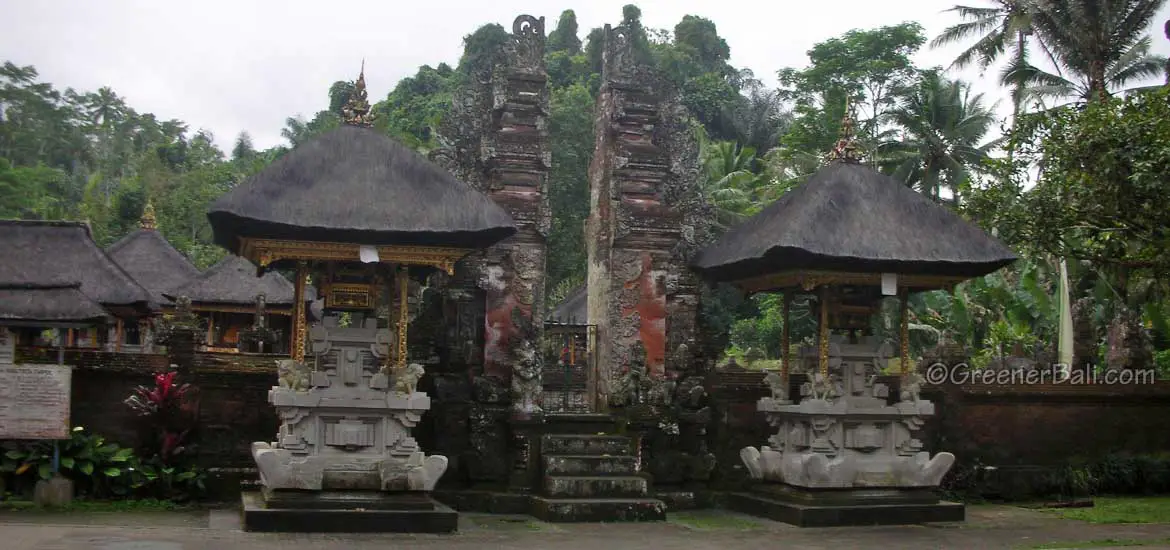The water springs of Tirta Empul are located just north of Tampaksering, not far from the Gunung Kawi temple complex and a 30- minutes drive from Ubud. The springs are one of the sources of the Sungai (river) Pakerisan.
It is also one of the most interesting Hindu temples in Indonesia. With thousands of temples on Bali island one, you should not exclude from your itinerary.
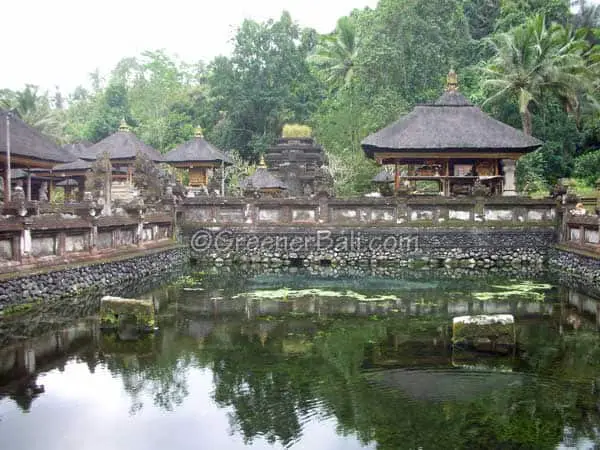
The holy springs
These holy springs are surrounded by forest and numerous palm trees creating a cool setting to admire the place. From the split gate entrance (candi bentar) you’ll stroll through a garden before you reach the bathing area. Woman having their period are not allowed to enter. Like all Balinese temples, wearing a temple scarf is compulsory.
The bathing area is connected to a big Hindu temple complex. Here you can also find the actual water source. The source is surrounded by a big wall in order to keep everything that isn’t sacred out.
Fortunately, you can have a peek over the wall and see clear water with a green-blue bubbling spot from which the water springs.
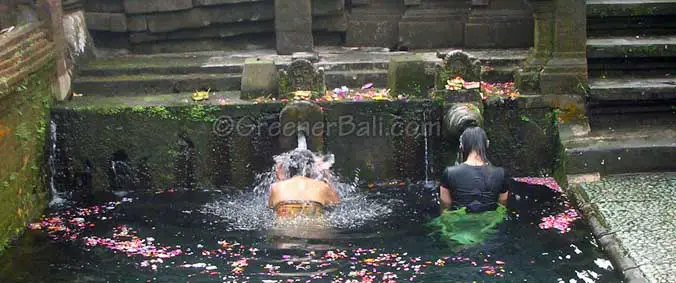
The Balinese believe that the source holds magical and healing powers. Additionally, it ensure eternal youth. Every year pilgrims gather together at this important place.
Holy water plays a special roll in Hinduism. The Brahman priests of Bali, who are the only ones to conduct numerous offerings and purification ceremonies, come to this source to collect the water as it is considered one of the holiest on Bali.
The three koi filled baths with spewing ornaments next to the source are made out of stone and divided into three sections. The left bath is for Balinese women and the middle one for Balinese men. The outer right bathing pool is smaller but is known to be the purest of all.
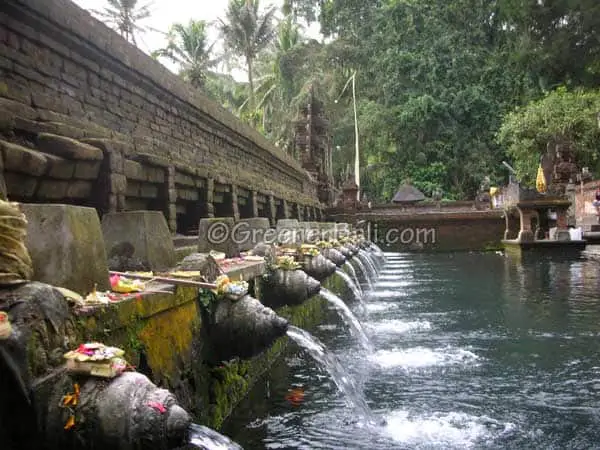
The History of Tirta Empul
Tirta is derived from the Sanskrit word “amrita” which means nectar of life elixir. The legend of this water source is based on the Hindu god Indra, who once won the battle against the demon king Maya Danawa.
Maya Danawa had poisoned the river Petanu, from which the warriors of Indra drank and died. To save his warriors Indra created a big water hole just north of the river Petanu, now known as Tirta Empul.
The water from this source was poured on his warriors who instantly woke up from the dead. Then, in the end they defeated the evil Maya Danawa.
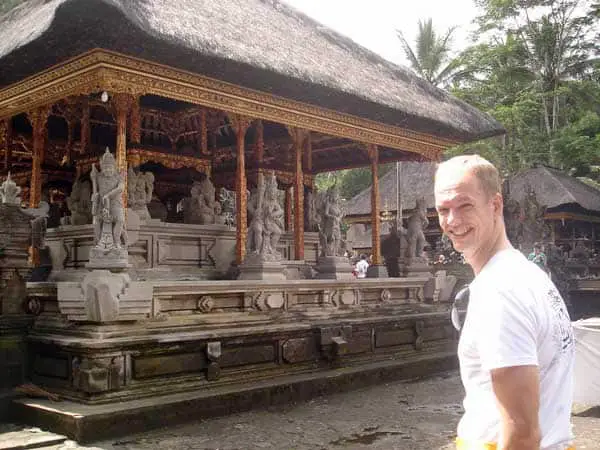
In the year 960 AC King Warmadewa created a bathing area at the source so for more than a thousand years Hindu devotees come here to purify themselves. In the 11th century, the King of Airlangga added additional decorations and statues. Finally, in 1969 it was fully restored, giving it the well-maintained look it has today.
A big black rock in the middle of the temple complex serves as the throne for God Indra. Around it there are nicely decorated shrines which beautiful gold-colored carvings.
One of these shrines is dedicated to Dewi Sri, the Rice Goddess and one to the God of Gunung Batur.

Take your time when strolling around
This holy bathing area is a nice place to visit and walk around. Don’t rush so you can appreciate it more. The temple complex is a very impressive and spiritual place. If you are there, you can see local Balinese taking a bath. As a foreigner, you should not join them. There are other public baths on the site where travelers are allowed to take a plunge.
If you plan to visit this holy source, you can easily combine it with a visit to Gunung Kawi which is located just 1-km away.
As for most attractions in Bali the best is to visit in the morning because it can get really busy at the beginning of the afternoon.

